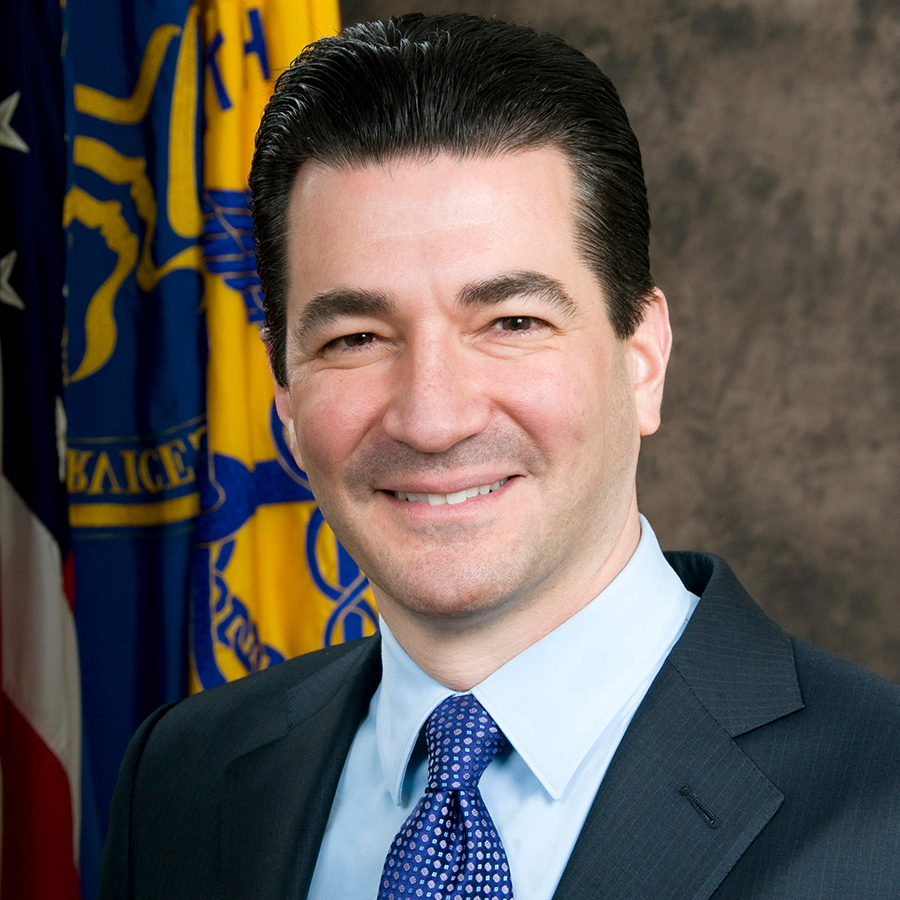FDA is Advancing New Efforts to Address Drug Shortages
By: Scott Gottlieb, M.D., FDA Commissioner and Janet Woodcock, M.D., Director of FDA’s Center for Drug Evaluation and Research
A key component of our public health mission is to help ensure Americans have access to safe and effective medicines. That’s why, as drug shortages arise, we take immediate action within our authorities, working across the FDA and with other government agencies, industry, and other stakeholders, to minimize the impact of these shortages and maintain or restore availability of critical medicines for the patients who need them.
A shortage of even one critical drug can have a significant effect on U.S. patients‘ health. So many of our efforts are focused on preventing shortages in the first place. But when shortages arise, we must also focus on identifying the root cause, and on taking steps to help make sure similar circumstances don’t happen again. The lessons we learn help us inform and improve our efforts to prevent shortages in the future.
Ensuring that a necessary drug is available to a patient involves a lot of stakeholders working together at key stages of the development, manufacturing, marketing, and distribution of a medicine. This collaboration and coordination also applies when we work together to curtail a shortage.
Yet, despite our extensive efforts to prevent these shortages, they continue to occur and persist for a myriad of reasons. To more directly address these important public health challenges, the FDA developed a comprehensive three-pronged approach that focuses on preventing shortages, early identification of anticipated shortages, and responding by remedying the underlying problems when shortages arise to the extent possible within our current authorities. This approach will be discussed as part of a much larger conversation later this month, when we will host a public meeting to bring together stakeholders for an interactive, collaborative discussion to further inform our efforts and build on this work to identify strategies and solutions for minimizing harm from shortages.
The immediate need
External factors, such as potential bioterror attacks and natural disasters, are a sobering reminder of the vulnerability of our nation’s drug supply. It’s been just over a year since Hurricane Maria made landfall in Puerto Rico, halting production of critical fluids used for mixing injectable medications in hospitals and clinics. The hard work of many people throughout the drug supply chain was a vivid example of collaboration that’s needed among all stakeholders to avoid and mitigate the effects of drug shortages. In that case, this collaborative work has led to restoration of adequate supplies of these products.
However, drug shortages far more frequently result from failures within a complex manufacturing system strongly influenced by the marketplace and economic challenges that face certain segments of the pharmaceutical supply chain. Some critical drugs are reimbursed at very low levels, leading to the potential for underinvestment in manufacturing or manufacturers exiting the market. This, in turn, can increase the risk for supply disruptions and shortages.
We’ve talked a lot about drugs that some people believe may be priced too high. But it’s also true that there may be critical drugs that may sometimes be priced too low relative to the full cost of reliably producing a predictable and high-quality pharmaceutical product. These critical drugs are typically older generic medicines that must be in a sterile, injectable form. Persistent manufacturing challenges associated with more complex generics also can lead to shortages. In 2018, we’ve experienced some particularly severe shortages caused by these challenges. These include an ongoing and serious shortage of injectable opioids to treat patients in severe pain and a dangerously low supply of self-injectable epinephrine products that are used to reverse life-threatening allergic reactions. The self-injectable epinephrine supply issue has improved in recent months. But we’re still grappling with the public health challenges posed by the injectable opioids shortage.
In cases of severe shortages of critical medications, the FDA plays an important role in mitigating these challenges. We have a dedicated staff working on drug shortages, and we have a variety of tools we can employ to minimize their impact. For instance, if an additional production facility or supplier is needed to help mitigate or prevent a shortage of certain important drugs, we can expedite an inspection of a new facility so that it can become operational as soon as possible. We can also expedite review of a new or generic drug application that, if approved, may help mitigate or prevent such a shortage. We prioritize these inspections and reviews. But there are no short-cuts. Although we cannot require a manufacturer to produce and manufacture a drug that is in short supply, we can urge manufacturers of similar or alternative products to ramp up production to meet an anticipated increased demand for their product. In cases of shortages of medically necessary drugs where alternative manufacturing is not available in the U.S., or the manufacturers of the product in shortage are not able to expand production, where necessary to protect the public health, we sometimes explore the option of exercising discretion with respect to the temporary importation of a product from a foreign manufacturing source until the shortage is resolved. When we do this, we carefully evaluate the overseas manufacturing site and product to help ensure safety for U.S. patients. Using these different tools, we helped to prevent 132 shortages in 2017. That same year, we reported 35 shortages, down from a high of 251 in 2011.
The long-term need
In July of this year, the FDA established an interagency Drug Shortages Task Force to investigate the root causes of drug shortages and take a new approach to advance long-term solutions to prevent shortages and address the continuing healthcare challenges these shortages can cause. The work of the task force will be forward-leaning and extensive, including ongoing engagement with stakeholders to consider possible proposals for additions to the FDA’s authorities, evaluate reimbursement policies of payors, explore possible incentives to encourage manufacturing that can expand and ensure a stable drug supply, and evaluate the need for an essential drugs list and incentives for manufacturing critical drugs. These efforts, and likely others still to be developed, will complement and strengthen the agency’s own ongoing efforts to establish long-term solutions. All options are on the table.
As we work to understand the root causes of drug shortages, we know how strongly economic factors matter. For example, if a manufacturer is the sole producer of a drug that isn’t particularly profitable, they may choose to cease production for business reasons. Manufacturers of generic drugs, with lower profit margins than their brand name counterparts, may be hesitant to invest capital to upgrade their facilities to pass an inspection, expand production, or improve the reliability of supply.
Through our emerging technology program, led by the Center for Drug Evaluation and Research, we engage with companies to encourage the adoption of new production technologies, such as 3D printing and continuous manufacturing. Over time, these methods could lower drug production costs, enable more rapid scale up of manufacturing, and help prevent drug shortages caused by product quality and manufacturing problems. In addition, two new FDA initiatives regarding quality metrics are aimed at helping manufacturers monitor and improve their quality control systems and processes. These scientific and regulatory advances can help provide enduring solutions to the structural issues that cause shortages.
Collaboration is key
The Drug Shortages Task Force embodies a core component of the common element for success: collaboration. Its members include not only senior leaders from the FDA, but also leaders from the Centers for Medicare and Medicaid Services, the Department of Defense, the Department of Veterans Affairs, and the office of the Assistant Secretary for Preparedness and Response in HHS, as well as the Federal Trade Commission. The continued work of each of these groups is critical for assuring that the supply of safe and effective prescription medicines to millions of Americans is reliable.
But making the task force a collaborative cross-agency initiative is just the beginning.
Since its formation, task force leaders have been engaging stakeholders from the drug supply and delivery community, including senior executives and visionary leaders from health care professional organizations, patient care advocacy groups, patient safety groups, group purchasing organizations, health insurance providers, pharmacy benefits managers, pharmacists, product distributors, manufacturers, health systems, and academia. We’ve been engaging with these stakeholders in a series of in-person listening sessions where attendees have been sharing their thoughts and insights. All of these efforts are helping us identify common ground and lasting solutions.
Public engagement
The FDA is also focusing on the root causes of drug shortages to better understand how to prevent shortages. As a part of this effort, on November 27, we are hosting a public meeting together with Duke Margolis, to bring together stakeholders to build on the ongoing work to develop long-term solutions to address the drug shortage problem and identifying potential ways to implement the solutions.
Our upcoming public meeting, Identifying the Root Causes of Drug Shortages and Finding Enduring Solutions, is specifically designed to build on the listening sessions and one-on-one meetings we’ve already conducted. This gathering will allow the FDA to obtain valuable feedback from additional stakeholder groups, including health care professionals, patients, manufacturers, wholesalers, pharmacists, public and private insurers, academic researchers, and the public. We welcome the feedback from diverse experts on the underlying systemic causes of drug shortages, and their recommendations for actions to prevent or mitigate their occurrences. Those able to attend, mark your calendar for November 27, 2018. For those unable to attend, please share your thoughts and ideas through our public docket, which will be open until January 11, 2019.
Advancing our collaborative work
In taking steps to address the root causes of drug shortages, we are confronting the challenges of a global drug supply, of highly intricate manufacturing methods that relate to many complex and injectable drugs, the risk of natural disasters and other threats, of advanced industry economics, changing demand, and many other factors. Given all these challenges, it’s unlikely that we could ever get to a time when drug shortages are no longer a risk to our nation’s drug supply landscape. But we’re confident there are steps we can take to reduce these risks, and to lessen the impacts when shortages arise.
The FDA’s goal is to find the best ways to decrease the number and impact of drug shortages, and to ensure a prompt and comprehensive effort to address and resolve shortages that cannot be prevented. By establishing the Drug Shortages Task Force and engaging with all stakeholders, we’re creating a solid foundation for improved approaches and strategies to tackle this issue. We look forward to advancing our work across the FDA, working together with other government agencies, and with stakeholders, to ensure that Americans have consistent and reliable access to safe, effective, high quality medicines.


